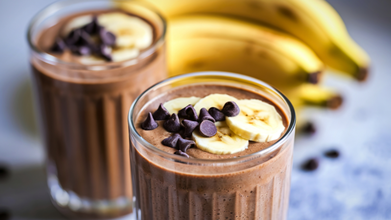- Health Conditions A-Z
- Health & Wellness
- Nutrition
- Fitness
- Health News
- Ayurveda
- Videos
- Medicine A-Z
- Parenting
6 Health Benefits Of Ashwagandha And Side Effects

6 Health Benefits Of Ashwagandha And Side Effects
Ashwagandha is an herb that has gained immense popularity in the Western wellness circles with its promising health benefits. Ashwagandha originates from ancient Indian healing traditions. The herb has been used for thousands of years to enhance mental and physical well-being. Ashwagandha offers a whole approach to health, it counters mental concerns as it does physical. Starting with fighting stress and reducing mental degradation up to your muscular performance and fertility, the amount of uses is massive.
Although there is still research into the benefits of ashwagandha, this is one of the more popular natural remedies. It's always a good idea to consult a healthcare professional before adding any supplement, especially if you have other conditions or are on medication.
So, what makes ashwagandha such a standout in the world of natural medicine? Let's explore its origins, potential benefits, and practical uses.
What is Ashwagandha?
Botanically, the plant is known as Withania somnifera, often called "Indian ginseng" or "winter cherry." The Sanskrit name translates to "smell of the horse," probably describing its strong odor and belief that the herb would give the same strength as a horse.
Originally coming from the shores of India and Southeast Asia, ashwagandha is a small, small yellow-colored shrub. These have been used in combination roots, powders, extracts, supplements prepared from the leaves which fight stress to infertility health complaints.
Health Benefit of Ashwagandha
The tradition, however, is extremely big, and now a whole lot of research that aims towards modern applications in medicine started appearing.
1. Stress Reduction and Anxiety Management
Ashwagandha is classified as an adaptogen, meaning it helps the body manage stress. Studies indicate that taking 125–1,000 mg of ashwagandha extract daily can significantly lower cortisol levels, the hormone associated with stress. Participants in clinical trials reported reduced feelings of anxiety and stress, supporting its traditional use as a calming agent.
2. Improved Cognitive Function
The randomized, double-blind, placebo-controlled studies showed evidence that ashwagandha may be used to enhance brain function. It improves executive functioning, attention, reaction time, and performance on cognitive tasks. This may be valuable for the elderly and for those suffering from mild cognitive impairment.
3. Enhances Physical Performance
The benefits of ashwagandha do not stop at physical health. It is also used to enhance athletic performance. Research indicates that 330–1,250 mg daily can increase muscle strength and reduce muscle fatigue, improving recovery. It also prevents muscle soreness, so it is a great supplement for athletes.
4. Reproductive Health and Hormonal Balance
Ashwagandha has been proven to enhance male fertility. According to a review of studies, the herb taken for 90 days enhanced sperm concentration, semen volume, and sperm motility. It also increased testosterone levels and luteinizing hormones, which are important for reproductive health.
5. Arthritis Relief
Preliminary studies indicate that ashwagandha may help in alleviating symptoms of rheumatoid arthritis. In one study, patients reported reduced joint pain and stiffness after consuming 10 grams of ashwagandha powder daily for three weeks followed by additional Ayurvedic treatments.
6. Improved Sleep Quality
Ashwagandha may also assist in promoting sleep. Its sedative effects help normalize the different stages of sleep and make it one of the remedies that are advisable for those who sleep with insomnia or whose sleep cycles are disturbed.
How to Use Ashwagandha
There are varied forms of ashwagandha such as:
- Capsules and Tablets - best suited for daily intake.
- Powder - blends well when mixed with milk, smoothies, or sweet liquids to mask a bittersweet flavor.
- Tea: Provides a relaxing manner of consumption and its benefits.
- Topical Creams: It is usually applied as a local application, but it's not as common.
The root or the root-and-leaf extract is the most common part of the plant. These contain withanolides, active compounds, which are believed to possess therapeutic properties, for example, anti-inflammatory and promoting brain health.
Is Ashwagandha Safe?
For the majority, ashwagandha is safe for when taken at the recommended dosage for up to three months. However, large dosages trigger gastrointestinal problems like abdominal pain, diarrhea, or vomiting. In rare cases, liver problems might be caused, so people with prior liver disorders should be careful as well.
Some people should strictly avoid taking ashwagandha altogether. These include:
People who are pregnant: It may lead to miscarriage.
Those individuals who are breastfeeding: Insufficient data is available on its safety.
Those undergoing surgery: It may interact with anesthesia and slow the nervous system.
Individuals with thyroid disorders: Ashwagandha may increase thyroid hormone levels.
Side Effects and Precautions
While mostly safe, ashwagandha sometimes causes mild side effects, including constipation and gastrointestinal distress, especially if higher dosages are used. People starting their journey with ashwagandha should begin by taking low dosages under the advice of a doctor to be sure it suits their needs.
LiverTox: Clinical and Research Information on Drug-Induced Liver Injury. [Internet]. Ashwagandha. Bethesda, MD: National Institute of Diabetes and Digestive and Kidney Diseases; 2012.
American Botanical Council. Ashwagandha.
Are Diet Sodas Really Safe? New Research Points To Liver Risk

Credits: Canva
Most people assume that low- or no-sugar drinks are a healthier alternative to regular sodas, but new research suggests that might not be the full picture. A large-scale study presented at UEG Week 2025 found that both sugar-sweetened beverages (SSBs) and low- or non-sugar-sweetened beverages (LNSSBs) are linked to an increased risk of developing metabolic dysfunction-associated steatotic liver disease (MASLD), a condition previously known as non-alcoholic fatty liver disease.
What Is MASLD?
According to the Cleveland Clinic, MASLD—short for metabolic dysfunction-associated steatotic liver disease, is a condition in which extra fat accumulates in the liver. It was previously called nonalcoholic fatty liver disease (NAFLD). Unlike liver damage caused by heavy drinking, MASLD is linked to metabolic risk factors such as obesity, type 2 diabetes, high blood pressure, and high cholesterol. If left untreated, it can progress to more serious liver problems.
What The Study Found
Researchers analyzed data from 123,788 participants in the UK Biobank who did not have liver disease at the start of the study. Participants reported their beverage consumption through multiple 24-hour dietary questionnaires, giving researchers insight into how both sugary and “diet” drinks might affect liver health.
The results were striking: individuals consuming more than 250 grams per day of either SSBs or LNSSBs faced significantly higher risks of MASLD, about 60% higher for LNSSBs and 50% higher for SSBs. Over a median follow-up of 10.3 years, 1,178 participants were diagnosed with MASLD, and 108 died from liver-related causes. Interestingly, LNSSBs, but not SSBs, showed a notable link to liver-related mortality. Both drink types were also tied to increased liver fat.
Understanding MASLD and Its Growing Impact
MASLD occurs when excess fat builds up in the liver, which can eventually lead to inflammation, fatigue, abdominal pain, and loss of appetite. Once considered less common, MASLD has now become the most widespread chronic liver disease globally, affecting more than 30% of the population. It is also emerging as a leading cause of liver-related deaths worldwide.
Lead author Lihe Liu emphasized, “SSBs have long been scrutinized, while their ‘diet’ counterparts are often seen as a healthier choice. Our study shows that both types of beverages are widely consumed, yet their effects on liver health have not been fully understood.”
Liu added, “Even modest consumption of LNSSBs, like a single can per day, was linked to a higher risk of MASLD. These findings challenge the perception that ‘diet’ drinks are harmless and highlight the need to reconsider their role in our diets, especially as MASLD continues to grow as a public health concern.”
Why Both Sugary and Diet Drinks May Harm the Liver
The researchers explained potential mechanisms behind the risks. SSBs, with their high sugar content, can spike blood glucose and insulin, promote weight gain, and increase uric acid levels, all contributing to liver fat accumulation. LNSSBs may affect liver health differently: by altering the gut microbiome, disrupting feelings of fullness, triggering sugar cravings, or even stimulating insulin secretion.
Water Remains the Safest Choice
Experts recommend limiting both sugar-sweetened and artificially sweetened beverages. Replacing either type with water showed a significant reduction in MASLD risk, about 13% for SSBs and 15% for LNSSBs. Simply switching between SSBs and LNSSBs did not reduce risk.
The researchers plan to investigate causal mechanisms more deeply with long-term studies, including randomized and genetic trials. They aim to better understand how sugar and its substitutes interact with the gut microbiome and influence liver disease.
This Vegetable Could Prevent Arterial Plaque Buildup

Credits: Canva
Arterial plaque buildup is one of the biggest drivers of heart disease, yet most people don’t realise how silently it develops. When fatty deposits, cholesterol, calcium, and cellular waste accumulate along the artery walls, they gradually harden and narrow the vessels, a condition known as atherosclerosis. This restricts blood flow, makes the heart work harder, and increases the risk of heart attack and stroke.
While medication and lifestyle changes are standard recommendations, growing research, including a study by the University of Sunshine Coast, Australia, suggests that one everyday food may offer surprising protection: beetroot.
Why Arterial Blockage Happens
Plaque develops over years. High levels of LDL cholesterol damage the artery lining, allowing lipids to stick and form deposits. Inflammation accelerates this process, making the plaque harder and more unstable. When a plaque ruptures, it can trigger a clot that blocks blood flow completely, leading to a heart attack. Because early atherosclerosis has almost no symptoms, prevention becomes essential.
Beetroot: A Natural Artery-Friendly Food
Beetroot has emerged as one of the most heart-friendly foods due to its exceptional nutritional profile. Rich in nitrates, antioxidants, fibre, minerals, and bioactive compounds, it is being studied for its ability to influence blood pressure, reduce inflammation, and possibly slow arterial stiffening, all key factors in preventing plaque formation.
Lowers Blood Pressure Naturally
One of the best-researched benefits of beetroot is its effect on blood pressure. Dietary nitrates in beets convert into nitric oxide, a molecule that helps arteries relax, expand, and carry blood more efficiently. Clinical studies show that drinking beetroot juice can lower systolic blood pressure by 4–10 mmHg within hours. Over time, this improved vascular flexibility may reduce strain on the heart and keep arteries healthier.
Reduces Inflammation, a Key Driver of Plaque
Chronic inflammation is a major contributor to plaque buildup. Beetroots contain betalains, powerful antioxidants with anti-inflammatory properties. Research suggests these compounds may help lower markers of inflammation in the body, ultimately slowing the progression of arterial damage.
May Limit Arterial Stiffness
Arterial stiffness is a strong predictor of heart attack and stroke. Studies have found that beetroot juice can reduce arterial stiffness in both young adults and older individuals. More flexible arteries allow for smoother blood flow, reducing the pressure that contributes to plaque formation and rupture.
Improves Muscle Recovery and Heart Efficiency
Beetroot has been found to improve oxygen efficiency in the body, meaning muscles — including the heart — need less effort to perform the same tasks. This can indirectly protect the cardiovascular system, especially during physical exertion.
Supports a Healthy Cholesterol Balance
The fiber and antioxidants in beetroot may help improve lipid levels by lowering LDL cholesterol and supporting the removal of excess fats. While not a substitute for medication, it complements a heart-healthy diet.
Looking For A Health Smoothie Recipe, Study Says You Should Skip The Banana

(Credit-Canva)
If you're making a smoothie for a health boost, especially for your brain and heart, you might want to leave out bananas. New research suggests that adding a banana to your drink can actually block your body from absorbing key healthy compounds.
Bananas have always been a big favorite for healthy drinks and desserts. You may have seen many healthy smoothie recipes like banana and coffee smoothie, or bananas and berries, being listed along with other healthy food recipes. While it does have many health benefits, how healthy it is with other nutrients involved has been questioned.
Researchers at the University of California-Davis found that bananas interfere with the absorption of powerful nutrients called flavanols. These compounds are fantastic for health, but if you blend them with a banana, you might not get the benefit you're looking for.
Should You Add Bananas In Health Smoothies?
The researchers found that bananas block how well we absorb flavanol. Flavanols are beneficial natural chemicals found in foods like berries, apples, grapes, and cocoa. When you eat enough of them regularly, they are known to help your memory, reduce swelling inside your body, which is called inflammation, and make your blood flow better.
So, why does the banana stop this? The culprit is a specific enzyme, a kind of protein, that is found in high amounts in bananas. It's called polyphenol oxidase (PPO). This is the same enzyme that makes a peeled banana or apple slice turn brown quickly. The researchers found that when PPO mixes with flavanols in the blender, it somehow stops your body from being able to use them. Lead researcher Javier Ottaviani said it was surprising to see how quickly even just one banana dropped the levels of flavanols your body could absorb.
Why Do Bananas Block Nutrients?
The scientists conducted a very clear experiment to figure this out. They had people drink three different things and then measured the flavanols in their bodies, by testing their blood and urine:
The Banana Test
A smoothie made with banana, which is high in the PPO enzyme.
The Berry Test
A smoothie made with mixed berries, which are low in the PPO enzyme.
The Control Test
A plain capsule of pure flavanols, just to see what 100% absorption looked like.
The results were impossible to ignore, the people who drank the banana smoothie had 84% less flavanols show up in their system compared to the people who took the pure flavanol capsule. This clearly proved that the banana was the reason the healthy compounds weren't getting absorbed.
How to Get Your Daily Flavanols?
If you're trying to meet the daily recommendation of flavanols, which is about 400 to 600 milligrams, to help your heart and overall health, you need to be smart about your smoothies.
The main takeaway is to skip the bananas if you're mixing it with high-flavanol foods like berries. If your smoothie already contains ingredients that are low in the PPO enzyme—like berries, pineapple, oranges, mango, or yogurt—then you are maximizing the amount of healthy flavanols your body will actually get. This finding opens the door for more research into how simple acts of cooking or preparing food, like how you brew tea (a major flavanol source), can change the nutrients you absorb.
© 2024 Bennett, Coleman & Company Limited

